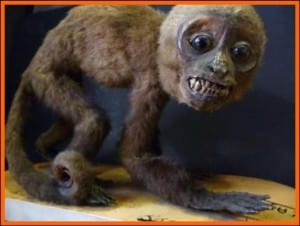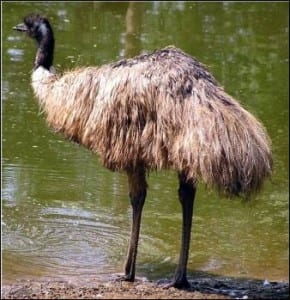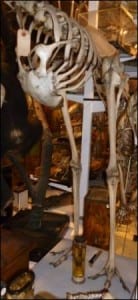Specimen of the Week: Week Fifty-Nine
By Emma-Louise Nicholls, on 26 November 2012
 I heard on a number of occasions during the Olympics that winners of Bronze medals were happier than those who won silver, due to the irritance of only just being pipped to the face-on-a-stamp and postbox-painted-gold in your honour. True or not, when palaeontology finally becomes a sport and I thus swoop into the Olympic Village of wherever it is at the time, I can unequivocally say that I will be ecstatic with any colour of medal. The species featured in Specimen of the Week today not only comes an agonising second in the tallest of its group competition, but also suffers the inconvenience of having a smaller South American cousin that looks similar enough to be regularly mistaken for it and thus further ruining its street cred. The specimen chosen for this week’s blog is one of silver medal stature, and almost has a face to match (in terms of colour, not looks). They’re big (but not the biggest), they’re bad tempered, and they (would) talk with an Australian accent, this week’s Specimen of the Week is…
I heard on a number of occasions during the Olympics that winners of Bronze medals were happier than those who won silver, due to the irritance of only just being pipped to the face-on-a-stamp and postbox-painted-gold in your honour. True or not, when palaeontology finally becomes a sport and I thus swoop into the Olympic Village of wherever it is at the time, I can unequivocally say that I will be ecstatic with any colour of medal. The species featured in Specimen of the Week today not only comes an agonising second in the tallest of its group competition, but also suffers the inconvenience of having a smaller South American cousin that looks similar enough to be regularly mistaken for it and thus further ruining its street cred. The specimen chosen for this week’s blog is one of silver medal stature, and almost has a face to match (in terms of colour, not looks). They’re big (but not the biggest), they’re bad tempered, and they (would) talk with an Australian accent, this week’s Specimen of the Week is…
**The Emu**
1) The emu can grow to an impressive 1.9 m tall. Which, although bestest in size by the great ostrich of fair Africa, I think you’ll agree is still a pretty good growing effort. Demonstrating the advantage of avian honey comb bone structure, despite a large bulky body the emu weighs no more than 60kg meaning it can grow a ruler’s length taller than me and yet weigh only a few kilograms more. You could say I’m not emused.
2) Being a bird, the emu has wings, not that you’d know to look it at. Slightly embarrassed by the puny size of its pectoral appendages, the emu grew a dense covering of shaggy grey-brown feathers that all but completely conceal the tiny wings. In a trade off for body parts the emu made up for scrimping on wing size by growing powerful legs and large three toed feet. Fly it can not, but for short periods the emu can run at speeds of up to 50 kilometres per hour. Pretty good.
3) Like humans, who haven’t made a conscious decision to be otherwise, emus are omnivores. Fruits, shoots, seeds, insects and small animals comprise the majority of their diet, although unlike (most?) humans, they feel that poo also makes for an appetising snack. When the seasons bring sufficient food and water reserves, emus tend to remain in a particular area. However, as the seasons change and food and water become more scarce, emus will cover hundreds of kilometers in search of sustenance.
4) Emus are gregarious animals that spend the majority of their time in small groups. This sounds very lovely until I tell you that a group of emus is called a mob, giving them a slightly less ‘cute and fluffy’ image. During times when they have to relocate, as outlined in fact 3, these groups join together to form mobs of hundreds, on occasion thousands, of individuals.
5) Emus form pairs during the breeding season. The female’s job is to lay a clutch of around 12 grapefruit sized eggs, whilst the male’s job is to incubate them. The model house husband, the male emu sits on the nest for around eight weeks, during which time he will not eat, drink or defecate. The result of this husband-of-the-year attempt is the loss of approximately a third of his body weight. The male stays with his stripey young for the first 18 months, during which time he teaches them how to forage for food, whilst defending them from predators like dingoes. Fun fact alert: Emu eggs can weigh around 900 g, making them one of the largest single cells in the world. Of course the gold medal goes to the ostrich.

An emu in the flesh and feathers. Image taken by J. Folmer. Image taken from http://commons.wikimedia.org/wiki/File:Emoe.jpg.
Emma-Louise Nicholls is the Museum Assistant at the Grant Museum of Zoology
 Close
Close



